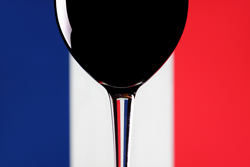Wine: New World & Old World
The forces from new and old worlds represent the entire international wine industry. "New world" refers to emerging wine brewers, including the US, Australia, New Zealand, and South Africa. "Old world" refers to countries with hundreds of years of wine brewage history, including France, Italy and Germany. The largest difference between both worlds is that wine tends to be made according to traditional processes in the old world and is brewed with modern technology in the new world. The wine from the old world pays attention to its original flavor and has more flavor of acor while the wine from the new world highlights its savor and mellowness and has more fruit fragrance. "New world" wine forces are a collection of different levels at low, medium and high prices. Of them Australian wine is an upstart with a history of over 200 years on account of its excellent natural environment, rich product variety and Asian flavor. "Old world" wine forces are represented by three time-honored European countries - France, Italy and Germany. In terms of quality, French wine is the best as the world's largest wine producer and exporter and contains many top brands as the focus of wine speculators; in terms of quantity, Italy leads other countries because the authorities permit very high average grape yield and the concentration of grape juice is lowered accordingly; contrary to Italy, Germany is famous for white wine and has the world's best and most expensive vintage wine.
France, a representative of the old world
As a representative of "old world" wine, French wine has continuously reduced its share in both Chinese and global markets in recent years. According to data, French wine remains dominant, but its market share has fallen to 32% today from 60% twenty years ago. The reason is that a minority of small wineries belittling quality have affected the entire image of the French wine industry while some new competitors are sharpening the competitiveness of their wine. In addition, "new world" countries such as the US and Australia have impacted the export of French wine. In the late 1990s, French wineries, especially those in Bordeaux, Languedoc and Roussillon, expanded largely the plantation area owing to huge demand and rising price. Thereafter the plantation area continued to expand, finally resulting in disastrous wine overproduction. Although French wine is narrowing down its zone of influence, the features of high prices and numerous top brands are still extremely competitive in the market.

|